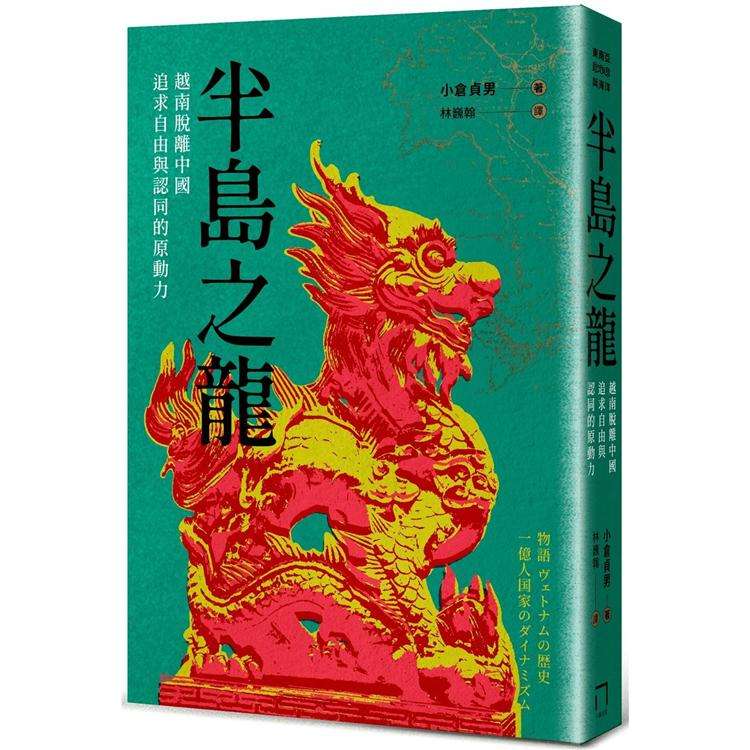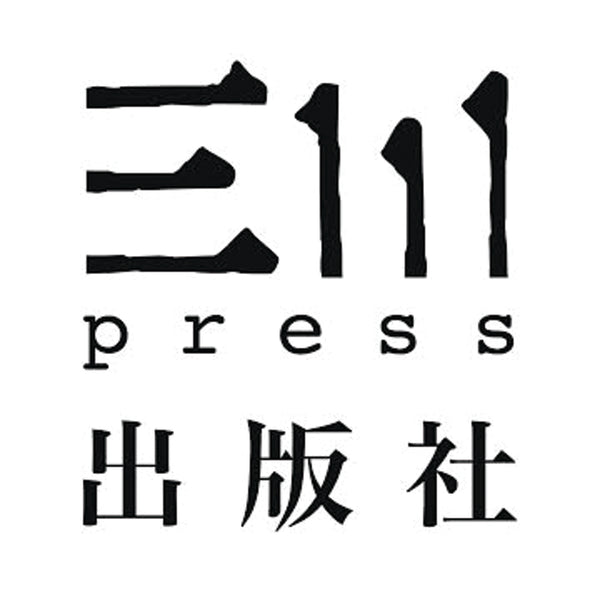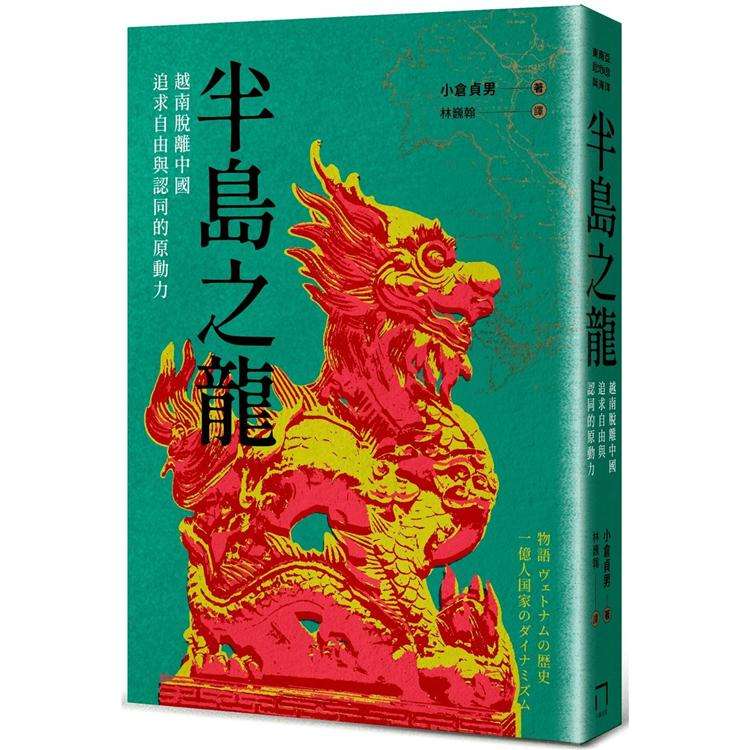Peninsula Dragon: Vietnam's drive to break away from China and pursue freedom and identity
Peninsula Dragon: Vietnam's drive to break away from China and pursue freedom and identity
In stock
Couldn't load pickup availability
出版社: 八旗
ISBN/EAN: 9789865524319
出版日期: 2020-12-02
页数: 384页
语言: Traditional Chinese
Vietnam - "The true descendants of the dragon"!
Vietnam, struggling to survive between the cracks of the empire,
Continue to roar loudly in world history!
The true descendants of the dragon, upholding Southeast Asian cultural identity and national pride,
Let Vietnam become the only country in history to defeat powers such as China, Mongolia, France, and the United States!
◆
With the clear thinking of a scholar and the fluent writing of a journalist, this book fully explains the history of Vietnam through storytelling. It is the lifelong masterpiece of Japanese Vietnamese history expert Sadao Ogura!
■The most unfamiliar neighbor: Vietnam
When you think of Vietnam, what comes to mind? Is it the picturesque Halong Bay, the quaint imperial city of Hue? Or perhaps the affordable and delicious Pho and French bread? Taiwan and Vietnam lie across the South China Sea, a mere two-hour flight from Taipei to Hanoi. Yet, even with such geographical proximity, Taiwanese people may still have only a limited understanding of Vietnamese history. In reality, Taiwan and Vietnam share many similarities: both have been profoundly influenced by Chinese institutions and culture, both were colonies of foreign powers before embarking on modernization, and most importantly, both are forging ahead in their quest for self-identity.
Japanese scholar Sadao Ogura served as a long-term correspondent for the Yomiuri Shimbun in Saigon (now Ho Chi Minh City), observing the pulse and changes of Vietnamese society over decades at the front line and even experiencing the Vietnam War firsthand. His masterpiece, Dragon of the Peninsula, which can be said to be the culmination of his life's efforts, fully explains the history of Vietnam through storytelling with the clear thinking of a scholar and the fluent writing of a journalist.
Ogura Sadao constructs a comprehensive history of Vietnam along two axes: "Axis A" (referring to the millennium-long interaction between Vietnam and China); "Axis B" (referring to the millennium-long history of Vietnam after its independence from Chinese rule and its emergence onto the world stage and interaction with other countries). Only by correctly understanding the context of these two axes can we fully understand how Vietnam has become what it is today.
■Axis A: Vietnam and China, one country on each side!
The first millennium of Vietnamese history cannot be separated from its entanglement with China, and this story begins with the Han Empire. Ever since the Han Empire conquered the Nanyue Kingdom founded by Zhao Tuo, Vietnam suffered a millennium of repressive Chinese rule. Simultaneously, China imported bureaucracy, Chinese characters, Confucianism, and other cultural influences into Vietnam, attempting to transform it into a Southeast Asian version of "Little China." However, the Vietnamese people's deep sense of cultural identity led them to realize that Vietnam was never part of China. Furthermore, the long-standing corruption of Chinese officials stationed in Vietnam led to frequent uprisings, some of which were led by women, a characteristically Vietnamese phenomenon, such as the rebellion led by the Trinh sisters and Zhao Yu.
Three famous battles of the Bach Dang River occurred in Vietnamese history: in 938, Vietnam (Ngô Dynasty) fought against the Southern Han regime of China; in 981, Vietnam (Le Dynasty) fought against the Song Empire; and in 1288, Vietnam (Tran Dynasty) fought against the Mongol Empire. All three wars ended in victory for Vietnam. Facing the vast Chinese army from the north and the Mongol cavalry, how did the Vietnamese always manage to defeat the overwhelming majority with their small numbers? The key was the unity of the Vietnamese court and people, who shared a common hatred of the enemy. Sadao Ogura pointed out that China's millennia-long oppression of Vietnam not only unexpectedly shaped the Vietnamese national identity but also became the driving force behind Vietnam's subsequent struggle against imperialism and its pursuit of freedom and identity.
Axis B: Interactions with Southeast Asian kingdoms and France have shaped Vietnam today
As part of the Southeast Asian cultural sphere, Vietnam, despite its independence from Chinese pressure, still faced challenges from other Southeast Asian kingdoms, such as the then-dominant Chenla, Laos, and Sukhothai (present-day Cambodia, Laos, and Thailand). While these kingdoms engaged in war and territorial disputes, they also engaged in trade and cultural exchange. Vietnam had its own unique village community, governed by a "Council of Elders." Sayings such as "The king's orders are not obeyed within the bamboo enclosure" and "The rice fields belong to the emperor, and the temples belong to the village" highlight Vietnam's unique Southeast Asian institutional culture. It was during this process of "southward expansion" that Vietnam absorbed the cultural essence of other countries, creating today's rich Vietnamese culture and shaping the foundation of the nation.
After the Sino-French War in the 19th century, Vietnam severed its vassal relationship with China and became a French colony. The Latinized Vietnamese alphabet, created by French missionary Alessandro, became the basis for today's Vietnamese national character. The French colonial period coincided with a period of transition as Vietnam struggled and adjusted between tradition and modernity. To resist French rule, Vietnamese intellectuals tried every possible means, from armed guerrilla warfare like Phan Dinh Phong and Hoang Hoa Tan to peaceful resistance within the system like Phan Chau Trinh. The legendary stories of Bao Dai, the "last of the royal family," Phan Boi Chau of the "Dong Yu Movement," Ho Chi Minh, the "Father of Vietnam," and Vo Nguyen Giap, the "Red Napoleon," spread throughout this turbulent era and remain popular today.
■Vietnam is very important to Taiwan!
Opening "Dragon of the Peninsula" reveals a magnificent epic of the Vietnamese people's unity in resisting foreign aggression. It is also a masterpiece that explains, within the context of Southeast Asian culture, what makes Vietnam what it is. Through telling the stories of fascinating characters, Sadao Ogura fully depicts Vietnamese history, a history often seen as complex, fraught with misunderstanding and disdain in the world of Chinese characters, and explains how the resilient and unyielding Vietnamese character was shaped.
Most importantly, Vietnam, like Taiwan, is more influenced by Chinese-style institutions and culture due to geographical factors and must confront its interactions with China. Taiwan, however, may be able to draw valuable inspiration and resonance from Vietnam's millennia-long history of resisting China and pursuing independence.
Ogura Sadao
An expert in Vietnam and Southeast Asian studies, he graduated from the Faculty of Economics at Keio University. He served as Saigon correspondent for the Yomiuri Shimbun and experienced the Vietnam War firsthand. He has also served as a professor at the Department of Comparative Culture at Tsuru University of Bunka and the Faculty of International Relations at Chubu University.
Lin Weihan
Graduated from Kansai Foreign Language College and Tsinghua University, he is currently a full-time Japanese translator. His translations include Where Should Humanity Go?, Kim Jong-un's Diplomatic Game (all published by Baqi Publishing), and A Mobile History of the World.
[Preface 1] My History of Vietnam, and the History of Vietnam in Taiwan / Zhang Zheng (Founder of the Southeast Asia-themed bookstore "Brilliant Times")
[Recommendation 2] Roses in the Cracks of Empire / Jiang Weiwen (Director of the Center for Vietnam Studies, National Cheng Kung University)
[Recommendation 3] Vietnam, the winner of the dream / Pan Meiling (Convener of the manuscript of "Classic Magazine")
[Prologue] Vietnam and Indochina ◎ The Birth of Vietnam
The origin of the name "Vietnam" / Self-proclaimed "Great South" / International relations presented on the A and B axes / Friendship Pass and Zhennan Pass
Chapter 1: The Age of Chinese Rule ◎ The Origin of the Nation - Hung Vuong Festival / Where Did the Vietnamese Come From? / The Origins of Indochinese Culture / Culture of Peace / Dong Son Bronze Culture ◎ Tragic Resistance - The Zheng Sisters and the Nanyue King Zhao Tuo's Rebellion / The Historical Process of Chinese Domination / Administrative Organization during the Han Empire / The Introduction of Chinese Characters / Lawlessness, Ruthlessness, and Deep Desire / The Han Empire's Assimilation Policy / The Second Zheng's Uprising / Lady Zhao's Uprising / The Endless Rebellions / Abe no Nakamaro's Suppression / The Conquest of Nanzhao / The Story of the Dragon God and Gao Pian
Chapter 2: Vietnam's Independence and State System ◎ Brave General Ly Thuong Kiet: The Confrontation Between the Chinese and Vietnamese Factions / Ngo Quan: The Brilliant Strategy at the Battle of Bach Dang River / Vietnam's Independence and the Establishment of the Ngô Dynasty / The Story of Dinh Bo Linh: The Otter / Dinh Bo Linh Takes Control / The Name of the Nation "Dai Co Viet" / Le Hoan: The Defeat of the Song Army at Bach Dang River / Brave General Ly Thuong Kiet / "The Southern Kingdom's Mountains and the Southern Emperor's Residence" / The First Emergence of a Centralized State ◎ Saving the Nation and the People - The National Crisis of Tran Quoc Tuan When the Yuan Army Attacked Three Times / King Hung Dao Tran Quoc Tuan Appointed Commander-in-Chief of the Army / Tran Quoc Tuan's Defeat of the Yuan Army at Bach Dang River ◎ Vietnam's State System
"The Li and Chen Era" / The emperor's origins were from a clan leader and a fisherman... / Monarchs and peasants / "Saving the country depends entirely on the power of the people" / Emphasis on building dikes / The spread and development of Buddhism / The story of an Indian monk and a beautiful woman / Belief in superpowers / The Zen-practicing emperor - Tran Taizong / The counterattack of the Confucian group ◎ National poet - Nguyen Kien The world is in chaos / Hu Jima's reforms / "My child, you must avenge the country..." / The Ming Dynasty's policy of mergers and assimilation / The uprisings of Le Loi and Nguyen Kien / Le Loi's battle to save the country / The solemn return of surrendered Ming soldiers / "After the emperor pacified Wu, he announced it to the world" / Nguyen Kien's sad end /
◎Glorious King - Le Thanh Tong's Guangshun Restoration - the most brilliant era / Expedition to the Champa Kingdom / Gathering the nation's best talents / Conducting censuses every three and six years / The Hong Duc Code, which focuses on civil affairs / Improving the "public land system" / "No one within the bamboo fence obeys the king's orders" / Vietnam's traditional village community structure / The "Council of Elders" that governs villages / "Paddy fields belong to the emperor, temples belong to the village" / Different aspects of village development
Chapter 3: The Era of Southward Advancement and Integration with the International Community ◎The Dynamic Process of Forming the Indochina Peninsula State
"Funan" appears in historical records / The rise of "Champa" / The trading kingdom of Champa / Champa's religious architecture / The Cham people and Sa-Huang culture / The founding of "Cambodia" / The southward migration of the Thai people ◎ Vietnam under attack from the north and south The offensive and defensive actions of Vietnam and Champa / Invasion from Cambodia and Laos / A country "unsuitable for defense" ◎ National hero - Nguyen Van Hue during the struggle between the north and the south / The Mo family seized power / The Two Hundred Years' War between the Zheng and Nguyen clans / The crisis facing the countryside / Endless rebellions / The chaotic rule of the "Quang Nam Nguyen clan" / The Tây Sơn brothers / Repelling the Siamese army / Defeating the Qing invasion / The achievements of Nguyen Van Hue ◎ Unifying the country - The Quang Nam Nguyen clan annexed Cambodian territory during the reign of Emperor Gia Long / Pigneau and the Franco-Vietnamese Treaty of Versailles / Nguyen Phuc Anh's resistance / The tragic life of a beautiful woman - The new biography of Kim Yun-chiu / The magnificent and tragic life of a woman / The unique style of Vietnamese poetry / "Nom" is the soul of the nation / Nguyen Du's life / Anger at the corruption of power ◎ French missionary - Alessandro
Chapter 4: The French Colonial Era ◎ National indignation – Phan Thanh Chien Li "Sign the treaty or give up the throne" – Cambodia becomes a French protectorate / The decline of cities and villages ◎ Resistance to France – Phan Dinh Phong and Nguyen Tri Phuong die of grief and anger / Tonkin, Annam, and Cochinchina / Annam and Tonkin become French protectorates / Anti-French hardliners – Nguyen Van Huong and the Zunshi theory / From the Chinese world to the Indochina Federation / Border disputes that continue to this day / Despair – Emperor Ham Nghi's resistance / The imperial edict / Phan Dinh Phong's resistance activities / Phan Dinh Phong's death / The long war – Huang Hua Tan / The resistance movement in the north / The battle in the south – Truong Kung Dinh / "The passion for liberating the motherland will not disappear..." / "Taking up swords to face the warships"
◎ Revolutionary Cause - Governor-General Phan Boi Chau's Dictatorship - Paul Du My / Promotion of the "National Language" / Du My's Harsh Taxes / Du My's Seizure of Vietnamese Land / Phan Boi Chau's Visit to Japan / "The East Wind Blows, Truly a Joy to the People" / Phan Boi Chau's Eastern Tour / A Disappointed Phan Boi Chau / Phan Boi Chau's Arrest / "Can Vietnam Have a Government?" / Phan Chau Trinh Criticizes the Hue Government / "Your Majesty, I Hereby Declare a War Against You" / The Heroic Martyrdom of Nguyen Thai Hac, a Kuomintang Member ◎ Independence and Nguyen Ai Quoc Group Conclusion / Journey to France / "Let Vietnam be free..." / Coordinator: Nguyen Ai Quoc / Nghe Tinh Soviet Movement / Nguyen Ai Quoc sentenced to death / Outbreak of World War II / Japanese troops enter Indochina / Formation of the Vietnam Independence League / First appearance of the name "Ho Chi Minh" / Ho Chi Minh orders a joint offensive / Japanese troops launch Operation Minh / French operations blocked / Viet Minh seizes power / Vietnamese Declaration of Independence / Ho Chi Minh's last words / Development of the Doi Moi policy / Uncle Ho and Vietnam's "village society"
◎ Acknowledgements ◎ References ◎ Chronology of Vietnam ◎ Search for key figures in the book
Share


